Have you ever wondered how to grow avocados indoors and whether it’s possible for an indoor-grown avocado tree to produce a harvest of delicious fruit? Avocado trees make attractive houseplants and growing them indoors is simple with a few basic guidelines. So let’s find out more.
Growing avocados is an attractive option for avocado fruit lovers. Avocados offer an irresistible creamy texture and they are really good for us. They contain vitamin E and healthy omega 3 fats. And they are also a great source of vitamins C, K, B5 and B6, as well as riboflavin, folate, niacin, magnesium and potassium. Avocado fruits also provide lutein and, beta-carotene. With all that goodness, no wonder we love them!
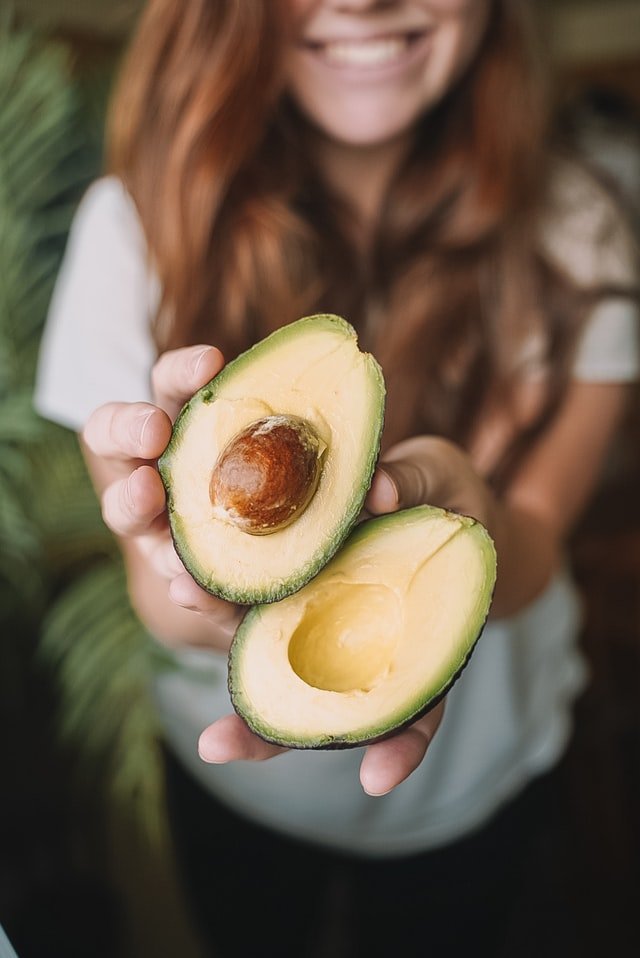
Table of Contents
Avocado Varieties
Avocados are evergreen perennial trees, with as many as 500 different varieties, but as this is unsubstantiated let’s stick with more than 50 for now. Here is a rundown of the ones you are most likely to come across and a bit more information about the most popular and likely candidates for indoor growing.
Hass
Hass is a Southern California variety and the most common avocado on sale in shops and supermarkets. For this reason, it is the flavor and texture that most of us are familiar with. They are frost sensitive below 32oF (0oC) and suitable for growing outdoors in zones 9-11. They are not the best choice for an indoor avocado tree because they are less heat tolerant than some other varieties.
Lamb Hass
A medium-sized upright and compact variety that is a cross between traditional Hass and Gwen which is a semi-dwarf Avocado.
Frost sensitive below 30°F (-1oC), however, is more heat-tolerant than Hass making it a better choice of Avocado tree for growing indoors.
Gwen
Gwen is a smaller variety with a maximum height of 15 ft (4.5m), and we can easily prune to keep smaller.
Despite its smaller size, Gwen produces fruit larger than Hass and is ideal for container growing.
The flavor and texture of the fruit are similar to Hass, being nutty and buttery, but not quite as creamy. They are cold hardy to 30°F (-1oC).
Reed
Reed is a slender and upright tree and is a good choice for indoor growing because, with careful pruning, it can be kept smaller. It is also more heat tolerant than Hass and tolerates less watering too. This is also a more manageable plant to care for than some other varieties.
They are frost sensitive below 32oF (0oC) and suit Zones 10-11 for outdoor growing.
The fruits are large round and green and have excellent flavor.
Hass and Reed avocado varieties are known to produce a decent crop when grown without a pollinating partner.
Holiday
Holiday variety is a semi-dwarf variety that grows to 12-15 ft (3.6-4.5 m). It’s an attractive tree with a distinctive weeping canopy.
Holiday produces large oval prolific fruit. Ideal for container growing and a great choice of avocado tree for indoors. Frost sensitive below 30°F (-1oC).
Avocado Growing Conditions
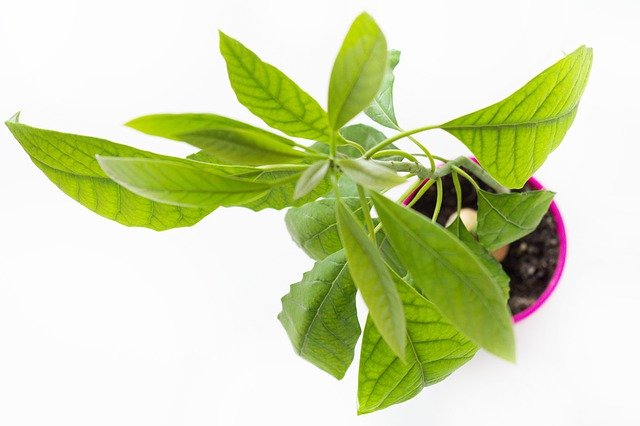
Outdoors avocados like warm temperatures of between 60oF to 85oF (15-30oC) with moderate humidity levels. Once established, some varieties can tolerate temperatures as low as 32oF (0oC) or even 28oF (-2oC). Although freezing temperatures must be avoided. They require a sheltered position out of wind and frost. Because they are a shallow-rooted tree, you should not transplant in the hottest part of the summer due to transpiration being poor when they are young.
Avocado Trees like a pH of 5.5 to 7 and free-draining soil. A light sandy compost is ideal for an indoor avocado. Watering can be done 2 – 3 times a week but be sure to check the soil before water again. They can be allowed to dry out somewhat between watering. You can check the soil moisture by scratching the surface with a finger and if the soil is moist 1 inch down, hold off on watering. On the other hand, if it is dry, go ahead and water. You can also monitor both the soil pH and the soil moisture with a soil gauge here.
Keeping an avocado tree indoors follows the same basic rules as for outside avocados. Either select a variety that tolerates pruning well, is naturally small, or buy a cultivated avocado grafted onto dwarf rootstock, which will serve to keep them shorter.
How To Grow an Avocado from Seed
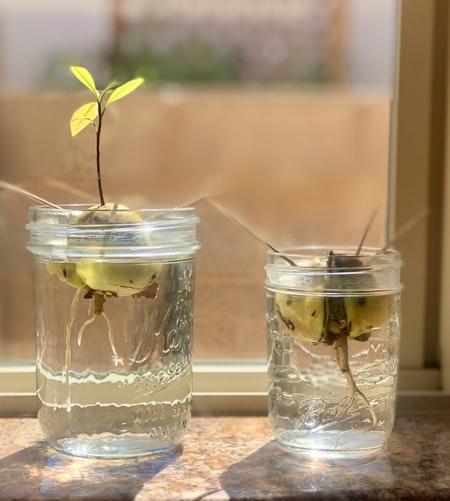
Commercially grown Avocados are cultivated by grafting and budding.
Home gardeners, especially those with children, will gain pleasure from growing the avocado from seed. The seed from the shop-bought fruit will take four to eight weeks to germinate, so initially, patience is required. However, once they start to sprout, the growth is fast.
There are two ways to grow your avocado from seed, so we’ll go into both here:
Growing Avocado Seeds In Water
- Use a clean jar with a wide neck
- Fill the jar with water
- Wedge the seed so that the bottom of the seed touches the water; this can be done with pieces of cork to hold it in place, soft wood or even digging toothpick sticks into the seed and then balancing them over the top of the jar
- The temperature should be 68-77oF (20-25oC) for best results
- Keep the water topped up so that the base of the seed remains moist
- When there are some leaves and a reasonable amount of root, carefully remove from the jar and plant into soil so the seed is covered
- Once the stem reaches 6 inches (15cm) cut back by half to 3 inches (7.5cm) to encourage further root growth
- Then when it grows another 6-9 inches (15-22cm) pinch out the two newest leaf sets to encourage bushy growth.
Growing Avocado Seeds in Soil
- Soak an undamaged seed in hot water at 104-125°F (40-50oC) for 30 minutes
- Cut a thin slice of off the pointed end off the seed
- Sow with the cut end slightly above the soil surface in a pot of moist sandy compost and keep at 68-77°F (20-25oC).
For both methods, the avocado tree should be re-potted once the roots are visible through the bottom of the pot. Then re-pot each spring into a slightly larger pot.
Growing Avocados
For many people, the easier option will be to buy an avocado tree via an online outlet or from a garden center or nursery. The nursery will have grafted the tree onto a rootstock, and the advantage is that you can choose a dwarf roof stock for a smaller plant which is especially useful if you plan to keep the avocado indoors.
When you get the avocado tree home check that it looks healthy in the pot, if the roots are showing through the bottom of the pot, then you should repot the avocado into a larger pot.
Re-Potting Avocado
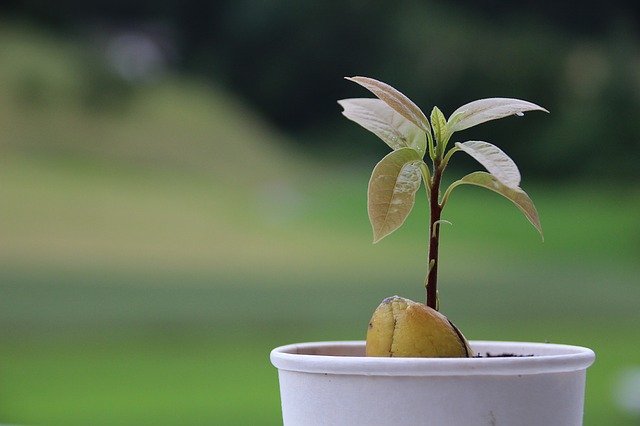
A potting mix that is designed for citrus is recommended because it has a similar pH soil requirement. This potting mix is organic and recommended for indoor growing.
Check the roots and if they are very tight and tangled then free up the roots before replanting. Remember that avocados are shallow rooting, so don’t be tempted to push the roots down too far.
The trunk should not be buried any deeper than where the roots meet the trunk of the tree. Doing so can promote disease and rot.
Positioning Indoor Avocado Tree
Position your young indoor avocado tree in a location where it receives good light and a little sun. You can reposition indoor avocado trees over three years old into full sun. Though the sun through glass is too intense for younger trees. They do, however, need good light and benefit from a grow light.
Fertilizing Indoor Avocado Trees
Avocados need a lot of nitrogen but that said, too much and you risk burning the root system that sits just below the surface. So the best option when growing avocados indoors is to use a general-purpose citrus fertilizer.
Fertilize your avocado three times during the first year, spring, summer, and fall. They do not require fertilization during the winter.
We recommend an organic fertilizer here. There are no artificial growth stimulants or toxic chemicals, just good, carefully balanced organic fertilizing ingredients. Some people like to use fish emulsion, but the fishy smell is not ideal for indoor use.
Pruning Indoor Grown Avocado Tree
Generally, avocados don’t need a lot of pruning. Although light pruning can enhance circulation and light penetration, which encourages budding. Pruning can also be done to keep the avocado tree at a manageable size. Avoid removing over a third of the wood at any one time.
Avocado Growing Problems
Root Rot
Root rot can often prove to be fatal, and the term covers a large number of fungi, including Pythium and Phytophthora, with varying success at treatment. Prevention is really the best cure; avocados do not like to sit in water. Providing free-draining soil and avoiding overwatering is the best strategy to prevent root rot of any type.
If your tree shows signs of root rot, you need to act fast to save it. The early signs are usually the lower leaves start to turn yellow:
Carefully remove the tree from the container and check the roots, they should look dry, white or cream and healthy
If the roots are slimy or brown; remove the soil by washing under a running tap and remove any brown pieces of root
- Dry carefully and put to one side
- Dispose of the soil
- Clean the container thoroughly
- Repot with fresh new soil and take extra caution with watering
Fungal Leaf Spot
Fungal Leaf Spot is treated by removing the whole leaf and destroying it. Do not add the diseased leaves to your compost bin or you risk contaminating the compost and spreading the fungal disease. Spray the remaining leaves with a copper fungicide.
Die Back
When avocados are grown as indoor plants, they can begin showing signs of leaf discoloration and deterioration after about 3 years. Being meticulous about the watering and keeping the plant clean and potting on each spring can help. The general consensus is that they don’t always thrive in the drier atmosphere of the house. You could help the health of your indoor avocado tree by moving it outside for a few hours during nice weather.
Mineral Salts in the Soil
An accumulation of mineral salts in the soil can cause problems for indoor avocados. If you notice the leaves are curling and turning brown and/or looking dry at the tips an overburden of mineral salts could be the problem.
If this happens, gently remove the tree from the pot and rinse the roots through with clean water and repot with fresh soil.
However, as with other potential problems, prevention is the best option: Consider watering your avocado with clean, filtered rainwater if this is an option for you.
And remember to hold off fertilizing during the winter months.
Pests
Few pests bother indoor avocados. However, that doesn’t mean that you shouldn’t keep an eye out for them and act swiftly if you see any. Horticultural neem oil is an excellent all-round organic pest treatment.
Will My Indoor Avocado Fruit?
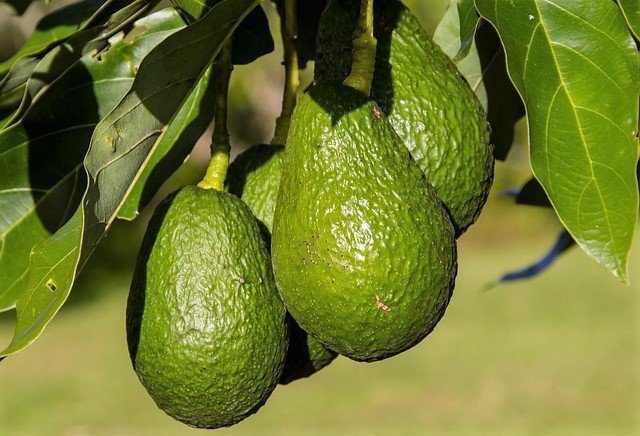
Avocados are very attractive trees that make lovely houseplants. But obtaining fruit from your indoor avocado is at best a long drawn-out process, and at worst, you have an attractive plant to enjoy indoors.
Avocado trees are classified into type A or type B types. Each tree produces both male and female flowers. Pollination is most likely to occur if there is another avocado nearby. The order the flowers open determines whether they are type A or type B. Type A the female parts bloom first and type B the male types bloom first.
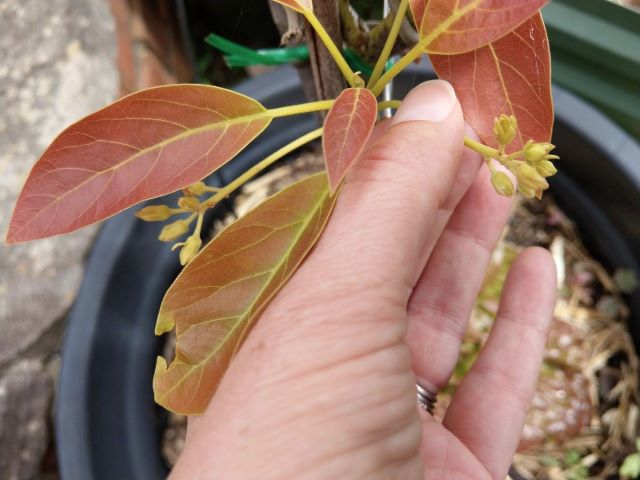
The varieties mentioned here are type A flowering so their flowers will produce the female bloom in the morning and the male bloom in the second part of the day. Cross-pollination with a different type will help fruit set but it is not required in a home garden environment.
If the fruit is your aim and you cannot grow avocados outdoors here are some tips to give your indoor avocado the best chance of flowering and fruiting:
- Keep more than one indoor avocado to encourage pollination. Preferably the opposite type
- Grafted varieties rather than seeds you have grown, will flower and fruit sooner
- Cease fertilizing in April (in the northern hemisphere) for a few months
- For indoor-grown avocados, you will need to pollinate flowers from one tree to the other using a paintbrush.
If your grafted tree is over three years old or your seed grown tree older than ten years, alter the fertilizer from around April to June (in the northern hemisphere). The aim is to cease nitrogen-rich food that encourages leaf growth at the detriment of flowers and food.
Once you do get your avocado to flower and fruit, keep in mind that many varieties only flower and fruit biannually.
Harvesting Avocado Fruit
Mature avocados are usually green on the plant. They do not ripen on the tree, instead, they need to ripen off the tree at room temperature over a period of about 10 days.
When your avocado tree first produces fruit, it will unlikely produce a large amount in the first year. Don’t be surprised if a few drop when immature, which is usually a sign that the tree is putting energy into growing a few fruits to healthy maturity.
When you notice that the avocados look like they have reached a standard size, test by picking one and leaving it on the kitchen bench to ripen for a few days. This test fruit will determine what you do next. If it shrivels up or remains hard, then leave the other avocado fruits for longer.
Related: Can You Eat Unripe Avocados? Answered!
If it softens and when you cut it open it is how you expect, then you can continue to harvest the rest over the coming weeks. When the fruit is not ready, you can repeat this method every five to seven days until you get a ripening fruit.
And once you’ve harvested your avocados, here are a few delicious recipes to use them:
Conclusion
Follow these guidelines for growing avocados indoors and you will have a beautiful indoor tree you can be proud of. Growing from seed is a satisfying and interesting thing to do, especially if you have children to get involved with the process. But by choosing a grafted avocado tree that can spend some time outdoors you can grow your own delicious harvest of avocado fruit.
Recommended products
Further reading:
- The Big Mystery of Small Avocados: Solved!
- Why Is My Avocado Bitter? Answered!
- How To Grow A Lemon Tree With Prolific Fruit At Home
- How To Grow A Mango From Seed And By Grafting
- How to Grow a Mango Tree: Planting, Caring and Harvesting
- 16 Vegetables You Can Regrow From Kitchen Scraps
- How To Grow Tomatoes In Pots
- How to Grow Cape Gooseberry
- 11 Herbs to Grow Indoors (and How to Grow Them)
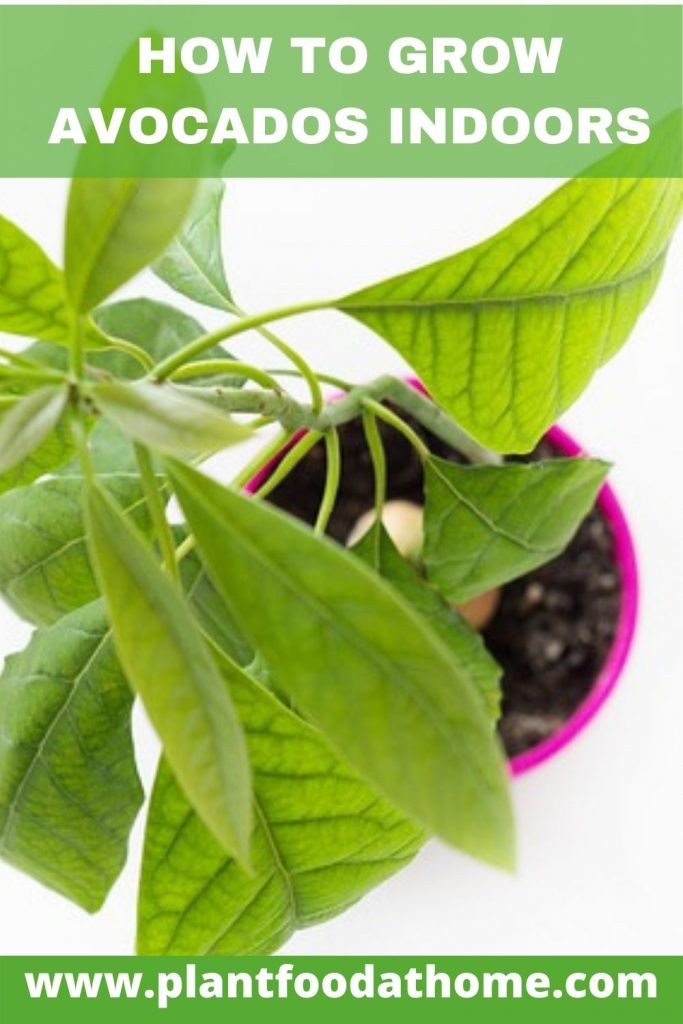

What a valuable website you have here. Definitely one of a kind. Thank you
Thank you for your lovely comment, Gabriela 🙂